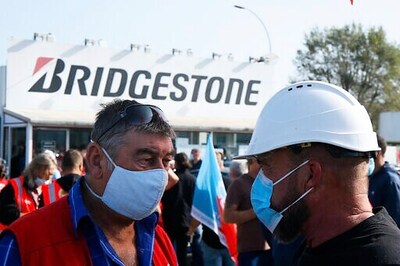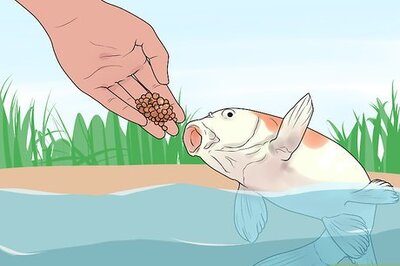
views
What does “back to the grind” mean?
“Back to the grind” means getting back to work after taking a break. People use this phrase when they’re returning to their typical routine at work or preparing to return to school following a vacation, holiday break, or other leave of absence. Here are some examples: “I just got back from my 2-week trip to Spain, which was absolutely amazing. I have work first thing Monday morning, though, so it’s back to the grind for me!” “I had a lot of fun over the winter holiday break, but I’m actually excited to get back to the grind. I’m ready to buckle down and ace my classes this semester.” “After using a few PTO days to rest and spend time with family, I feel totally recharged. Now it’s time to get back to the grind!”
Origins of “Back to the Grind”
The phrase “back to the grind” evolved from slang usage of the word “grind.” Literally, “grinding” something means breaking it down into small pieces or powder by pressing it between two hard surfaces (like grinding pepper or coffee, or grinding a sharp edge to make it smooth). Because the process of grinding can be repetitive, monotonous, or difficult, many people adopted the term “daily grind” to refer to their regular routine at work or school. Getting “back to the grind” therefore means getting back to this routine. The earliest recorded use of the term “daily grind” was in 1853. “Back to the grind” may also be related to the common expression “on the grind,” which means to work tirelessly and relentlessly toward a certain goal.
How to Use the Phrase “Back to the Grind”
Say you’re getting “back to the grind” after taking a break at work. Whether you went on a vacation, used PTO days to catch up on some much-needed rest, or your whole workplace closed down over the holidays, the phrase “back to the grind” perfectly captures the energy of returning to your regular schedule. Here are some examples of how to incorporate it into your conversations: “Did you enjoy the holidays? I had fun visiting my hometown to spend Christmas with my parents, but I’m excited to get back to the grind.” “My partner and I took a few days off of work to go on a road trip for our anniversary. It was amazing, but now it’s time to buckle down and get back to the grind!” “I used some PTO last week because my sister was visiting me from out of state. It was such a welcome break, but I’m ready to get back to the grind and finish this quarter strong.”
Say you’re getting “back to the grind” when returning to school. Annual school schedules are filled with breaks, from summer vacation to the winter holidays to spring break. If your school is starting up again soon, try using the phrase “back to the grind” to describe the feeling of getting back into your typical routine. “Spring break definitely wasn’t long enough! It’s gonna be tough to get back to the daily grind on Monday.” “I’m definitely ready to get back into the grind with school. Summer was super fun, but it can be a little boring to have no routine.” “For Christmas, my parents got me a laptop to use for studying and homework. It definitely makes me more excited to get back to the grind when school starts next week!”
Use the phrase “back to the grind” to caption a social media post. For example, if you took a break from going to the gym but you’re starting up again, you could post a photo of yourself at your workout and use “back to the grind” as the caption. Or, if you took a vacation and you’re returning to your regular work schedule, you could post a photo of your desk set-up to your Instagram story and add this phrase.
How to Get Back to the Grind after a Break
Try to schedule a “catch-up day” before your official return. Instead of jumping right back into work or school after taking time off, try to schedule a buffer day to ease yourself back into your routine. For example, if you get back from a 2-week long international trip on a Tuesday night, don’t try to return to work the next morning—this is bound to make the transition difficult. If you can, take Wednesday off, too, and use the day to get everything back in order before your return to work. This goes for staycations and holiday breaks, too. Instead of scheduling lots of activities or social outings on the last day of your break, keep that day free to take care of any tasks or chores you need to get done before work or school. This will help you get back into a productive mindset and make the transition from relaxation mode to work mode much less jarring.
Make a list of your top priorities for the week. The first week back at work or school can be tough, and you may feel a little overwhelmed. To keep track of your responsibilities and stay on track, consider making a to-do list for the week, with the items organized in order of their importance. This will help you prioritize your tasks and decide which ones may be able to wait until next week when you’re back into the groove of things.
Resist the urge to overwork yourself after a break. After taking some time off, you may feel tempted to put in extra hours or grind extra hard to “make up” for the time you missed. This approach makes sense in theory, but it can actually leave you feeling burnt out and stressed. Remember, breaks and time off are a normal part of life, and research shows that they are actually beneficial for your performance and productivity. During your first week back, focus on doing the best you can (like you would any other work week), rather than pushing yourself to exhaustion.
Make time for relaxation. You may think that you need to forgo breaks to catch up with tasks after returning to work, but this can actually do more harm than good. According to research, taking breaks throughout the workday is essential to prevent burnout, improve performance, and maintain productivity. Here are some activities to do during your breaks to make them even more beneficial and restorative: Use your break to do some type of movement or exercise. Take a 10-minute walk, do some stretches, or do a few quick yoga poses. Do a 5-minute meditation to center yourself and promote calm, relaxed feelings. Eat a quick, nutritious snack to boost your energy. Head outside to spend some time connecting with nature and getting your daily dose of vitamin D from the sun.


















Comments
0 comment